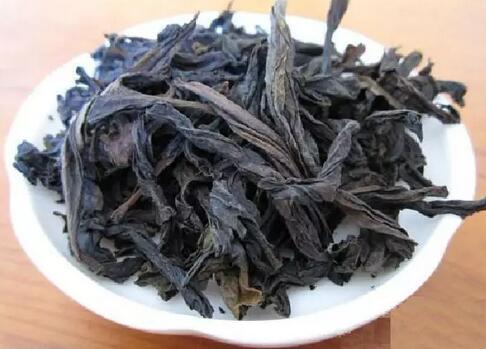Speaking of the world-famous Da Hong Pao, we won’t recount the ancient story of the top scholar. Instead, let’s talk about the plants themselves—the revered ancestors, the mother trees of Da Hong Pao. They grow in Tianxin Rock Jiulongke in the Wuyi Mountain scenic area. In the early 1980s, asexual propagation of the mother trees succeeded, meaning the tea plant varieties (six plants of three strains) could be cultivated on a large scale. The differences between the mother trees and their asexually propagated offspring are minimal, but the formation of high-quality tea depends more on the growing environment and tree age.
Currently, the production of Da Hong Pao tea in Wuyi Mountain has reached a considerable scale, with over 40,000 acres of tea gardens available for cultivation.

The astonishing facts about the mother trees of Da Hong Pao:
1. In 2003, the Wuyi Mountain municipal government insured the six existing mother trees of Da Hong Pao for 100 million RMB with China People’s Insurance Company.
2. At the 7th Wuyi Mountain Tea Culture Festival in 2005, 20 grams of Da Hong Pao from the mother trees were auctioned for 208,000 RMB.
3. As part of Wuyi Mountain’s UNESCO World Heritage site, the mother trees have been under special protection since 2007, with harvesting halted to ensure their healthy growth.
4. The last harvest of 20 grams of Da Hong Pao tea from the 350-year-old mother trees was donated by the Wuyi Mountain municipal government to the National Museum of China for preservation.

Today, Da Hong Pao simply represents a product name. In the market, it has three meanings: first, ordinary rock tea made using the Da Hong Pao method (a general term); second, blended tea combining multiple varieties to achieve the best characteristics of aroma and flavor; third, pure Da Hong Pao propagated asexually from the mother tree varieties (Beidou, Qidan, and Que She).
High-quality Da Hong Pao should have: no noticeable bitterness, a rich texture (thick and smooth in the mouth), a lingering aftertaste, floral or fruity aroma, a milky fragrance, and a strong lingering scent in the cup (cold sniff). It should also exhibit three-color leaves, a toad’s back texture, and a ratio of three red leaves to seven green leaves.